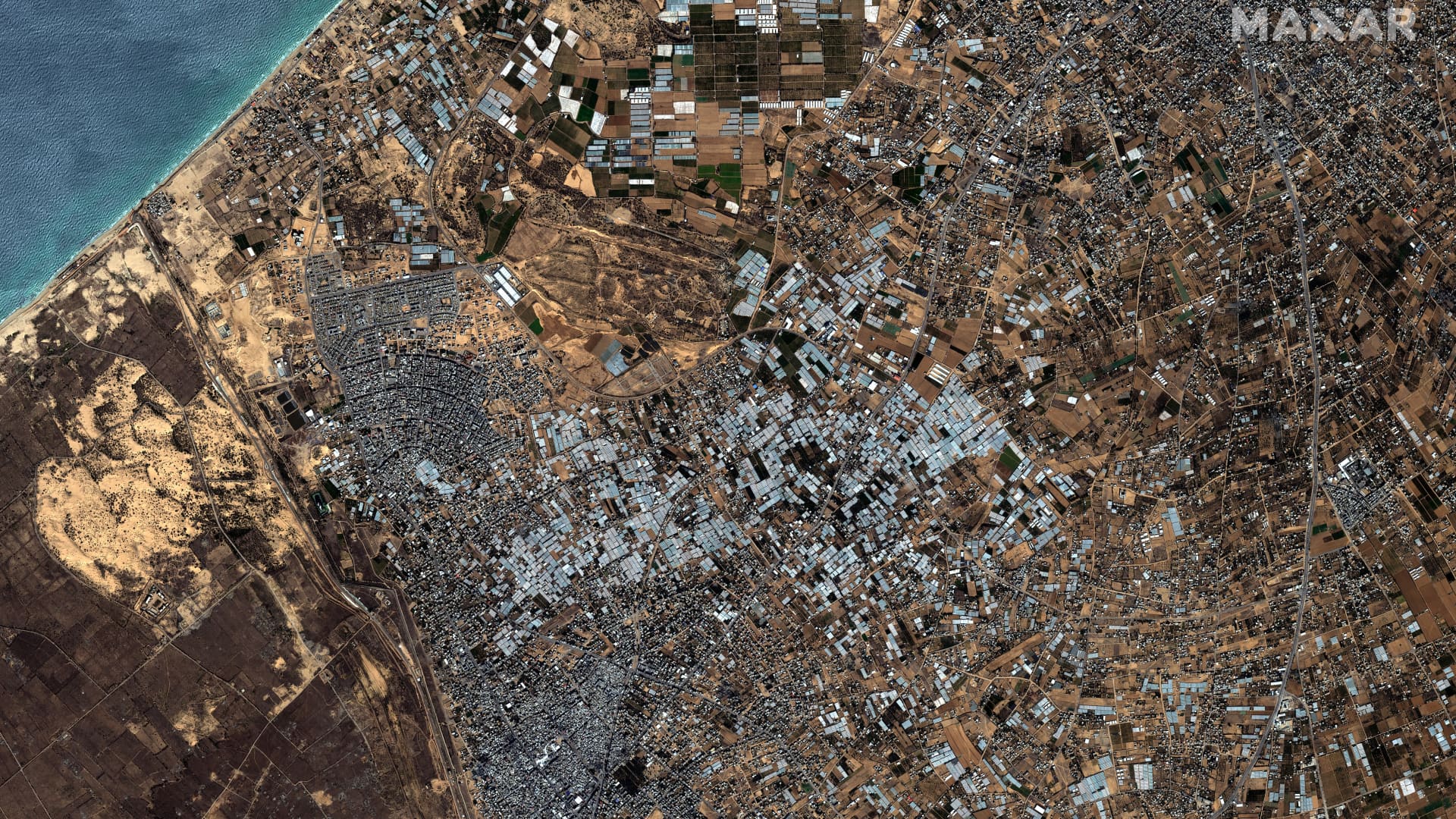
- Located on the Gaza-Egypt border, the Rafah crossing is the sole crossing point between Egypt and the Gaza Strip.
- To most of the more than 2 million Palestinians living in the enclave, it represents the only potential exit from the territory as Israel continues its aerial bombardment campaign.

The U.N. agency for Palestinian refugees said Tuesday that the deepening humanitarian crisis has become "really drastic," with crowds of people seen waiting to leave on the Gaza side of the border and an aid convoy of trucks lined up at the Rafah crossing in Egypt.
Located on the Gaza-Egypt border, the Rafah crossing is the sole crossing point between Egypt and the Gaza Strip. To most of the more than 2 million Palestinians living in the enclave, it represents the only potential exit as Israel continues its aerial bombardment campaign.
Egypt tightly restricts the opening of the Rafah crossing and has so far been reluctant to open it for the movement of people unless Israel allows humanitarian aid to enter the territory.
Talks between Egypt and Israel on Monday failed to give the green light for the delivery of desperately needed humanitarian supplies into Gaza.
People living in the territory have been caught in the crossfire of the Israel-Hamas war, with Israel declaring a full siege of the Gaza Strip at the start of last week following a devastating attack from the Palestinian militant group Hamas on Oct. 7.
Money Report
The United Nations has repeatedly called for humanitarian access to the Gaza Strip via the Rafah crossing.
Here are some of the latest images from the Rafah crossing:






Tamara Alrifai, spokesperson for the United Nations Relief and Works Agency for Palestine Refugees (UNRWA), said Tuesday that it was imperative for the group to be able to distribute humanitarian supplies urgently and safely into the Gaza Strip.
"Over the last two days, reports of about 1 million people — that is a sea of people — going south moved using whatever means they could and given the lack of fuel in Gaza a lot of them moved by feet. So, the images we have been receiving from my colleagues are harrowing images of people on their feet walking under airstrikes and air bombings to try to find shelter in a safer area," Alrifai told CNBC's "Street Signs Europe."
"My colleagues from UNRWA have also moved south and are now in one of our logistical bases, effectively a warehouse in the south of the strip. In that warehouse, my colleagues are working, sleeping and eating whatever they find with around 6,000 civilians from Gaza."
Alrifai said the conditions in the warehouse were "very, very difficult," noting that her UNRWA colleagues each have access to one liter of drinking water per day.
"The situation is really drastic. We have to get aid in. We have to get supplies in. We have to get fuel in and mostly all that access has to be safe," she added.






